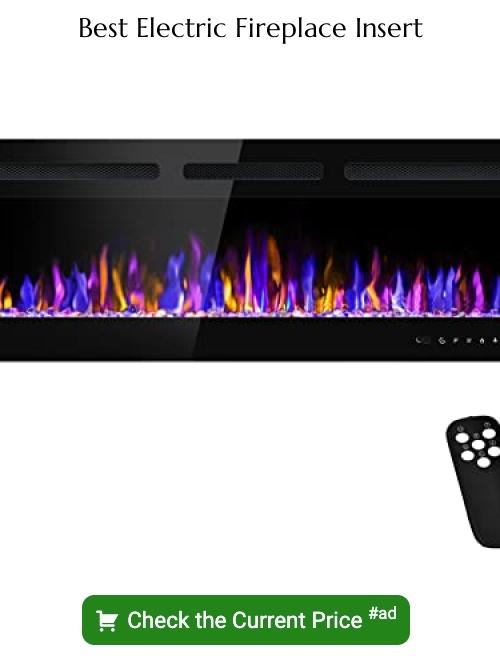Last updated on
Discover budget-friendly and creative alternatives to gas fireplaces, with their benefits and drawbacks explained in detail by a seasoned male home decorator.
As the winter season approaches, there’s nothing quite like snuggling up in front of a warm and cozy fireplace. However, traditional wood-burning fireplaces can be expensive to install and maintain.
Not to mention the environmental impact they have on our planet. That’s where gas fireplaces come in as an alternative option that provides warmth without the hassle of chopping wood or cleaning up ashes.
But what if you’re looking for something even more budget-friendly or unique? In this article, we’ll explore 15 gas fireplace alternatives with their advantages and disadvantages so that you can find the perfect solution for your home decor needs while staying within your budget. So, let’s get started!
Electric Fireplace

Electric fireplaces are a popular alternative to gas fireplaces. They offer the same cozy ambiance without the need for venting or gas lines.
Electric fireplaces come in various sizes and styles, from wall-mounted units to freestanding models that mimic traditional wood-burning stoves.
One of the advantages of electric fireplaces is their ease of installation. They can be plugged into any standard outlet, making them an excellent option for renters or those who don’t want to deal with complicated installations.
Another advantage is their energy efficiency. Unlike gas fireplaces that require fuel consumption, electric models use only electricity and produce no emissions or pollutants.
However, one disadvantage of electric fireplaces is that they may not provide as much heat as a gas fireplace would. Some people find the artificial flames less realistic than real flames produced by burning logs in a traditional fireplace.
Overall though, if you’re looking for an easy-to-install and low-maintenance alternative to a gas fireplace with minimal environmental impact – then an electric model might be just what you need!
Gel Fuel Fireplace

One alternative to a gas fireplace is a gel fuel fireplace. Gel fuel fireplaces use canisters of gel fuel that burn cleanly and produce no smoke or ash.
They are easy to install, as they do not require any venting or chimney system.
One advantage of a gel fuel fireplace is its portability. Since it does not need any external connections, you can move it from room to room or even take it with you when you move houses.
However, one disadvantage of using this type of fireplace is the cost and availability of the gel fuel cans. While they are relatively inexpensive individually, if used frequently they may add up in cost over time compared to other alternatives like electric fireplaces which only require electricity for operation.
If portability and ease-of-use are important factors for your home decor needs then a gel-fuelled option could be an excellent choice for creating ambiance without breaking the bank on installation costs associated with traditional gas fireplaces!
Bioethanol Fireplace
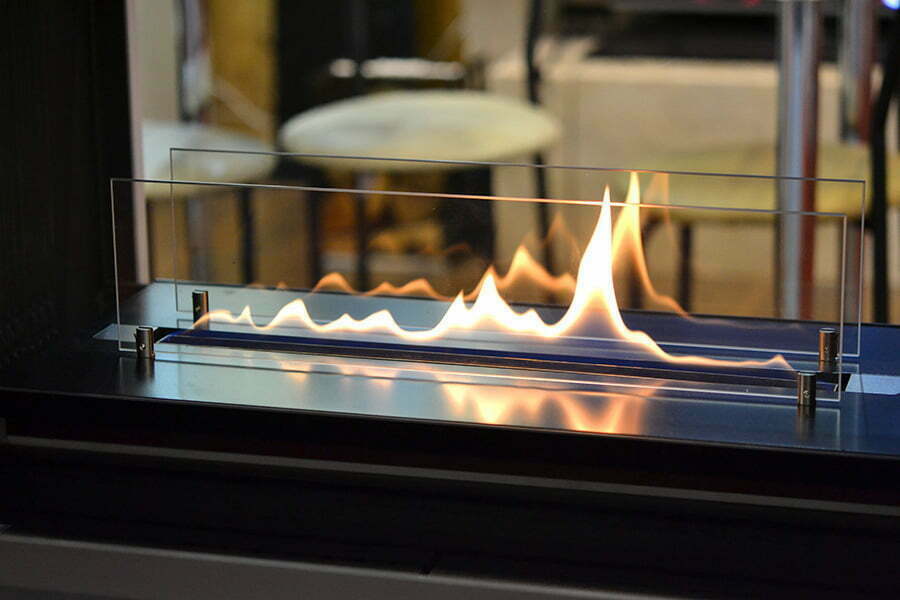
Another alternative to a gas fireplace is a bioethanol fireplace. Bioethanol fireplaces use renewable energy sources, making them an eco-friendly option for those who want to reduce their carbon footprint.
They also do not require any venting or chimney, which makes installation easier and more affordable.
However, one disadvantage of bioethanol fireplaces is that they produce less heat compared to traditional gas fireplaces. The fuel can be expensive and may need frequent refilling depending on usage.
It’s important to note that while these types of fireplaces are generally safe when used properly, there is still a risk of accidents if proper precautions are not taken during use and maintenance.
If you’re looking for an eco-friendly option with easy installation but don’t mind sacrificing some heat output or potentially spending more on fuel costs in the long run then a bioethanol fireplace could be worth considering as your next heating source alternative!
Wood-burning Stove

One of the most popular gas fireplace alternatives is a wood-burning stove. This classic heating option has been around for centuries and can add a cozy, rustic feel to any home decor.
One advantage of a wood-burning stove is that it provides heat even during power outages, making it an excellent backup heating source. Burning wood can be more cost-effective than using gas or electricity to heat your home.
However, there are also some disadvantages to consider when choosing this option. Wood-burning stoves require regular maintenance and cleaning to ensure they operate safely and efficiently.
They also produce smoke which may not be suitable for those with respiratory issues or allergies.
If you’re looking for an alternative heating source that adds charm and warmth to your space while being budget-friendly in the long run – then a wood-burning stove might just be the perfect choice!
Pellet Stove
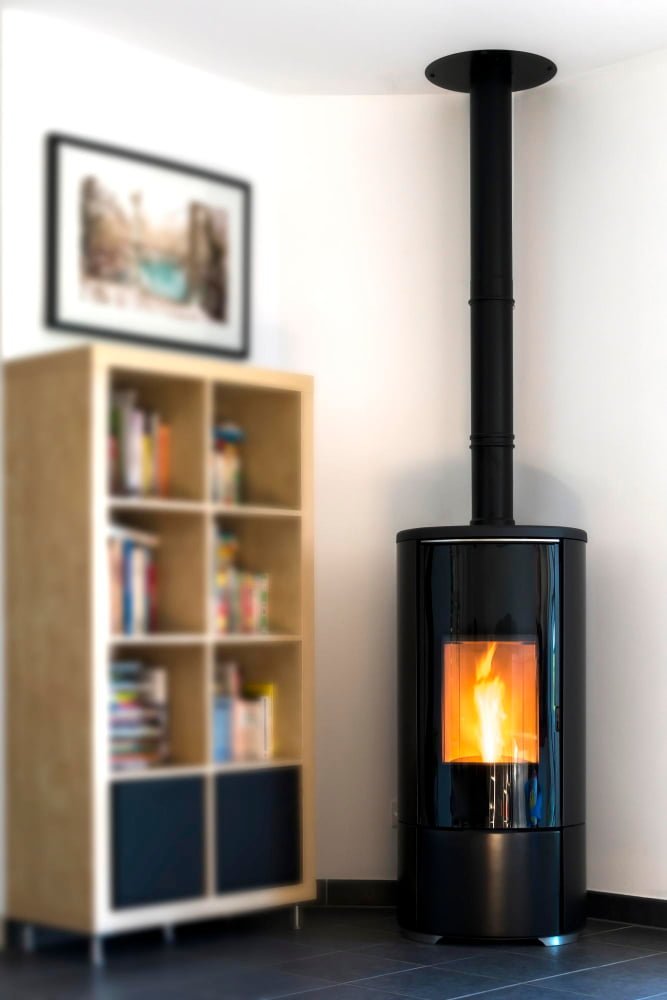
Pellet stoves burn compressed wood pellets, which are made from sawdust and other wood waste materials.
They can be an efficient heating option as they produce less ash and emissions than traditional wood-burning stoves.
Advantages of pellet stoves include their ease of use, as they typically have automatic ignition and temperature control features. They also require less maintenance than traditional fireplaces or wood-burning stoves.
However, there are some disadvantages to consider when choosing a pellet stove for your home decor needs. One major drawback is the cost of purchasing the stove itself, which can be higher than other alternatives such as electric fireplaces or space heaters.
While pellets may be cheaper than natural gas in some areas, they still require ongoing fuel costs that should be factored into your budgeting considerations before making any purchase decisions for your home decor needs with this type of alternative heating source in mind.
Radiant Heating Panels
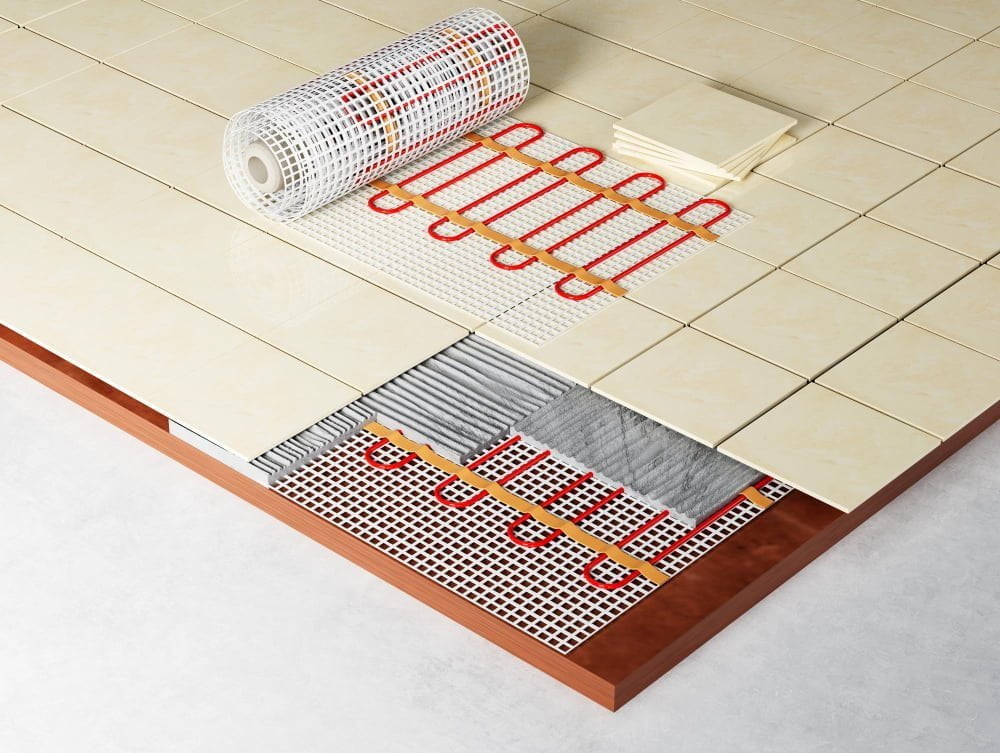
Radiant heating panels are a great alternative to gas fireplaces, especially for those who want to avoid the hassle of maintaining a traditional fireplace. These panels use infrared technology to heat up objects in the room, rather than just blowing hot air around like forced-air systems do.
This means that they can provide more even and comfortable warmth without drying out the air or creating drafts.
One advantage of radiant heating panels is that they are very energy-efficient since they only heat up what’s necessary instead of wasting energy on empty spaces or unused rooms. They also don’t require any fuel source other than electricity, which makes them much safer and easier to operate compared with gas fireplaces.
However, one disadvantage is that radiant heating panels can be expensive upfront due to their installation costs and equipment requirements. Some people may not find them as visually appealing as traditional fireplaces since there isn’t an actual flame present in the room.
Overall though, if you’re looking for an efficient way to warm your home without breaking your budget or dealing with maintenance issues associated with gas fireplaces then radiant heating panels might be worth considering!
Infrared Heater
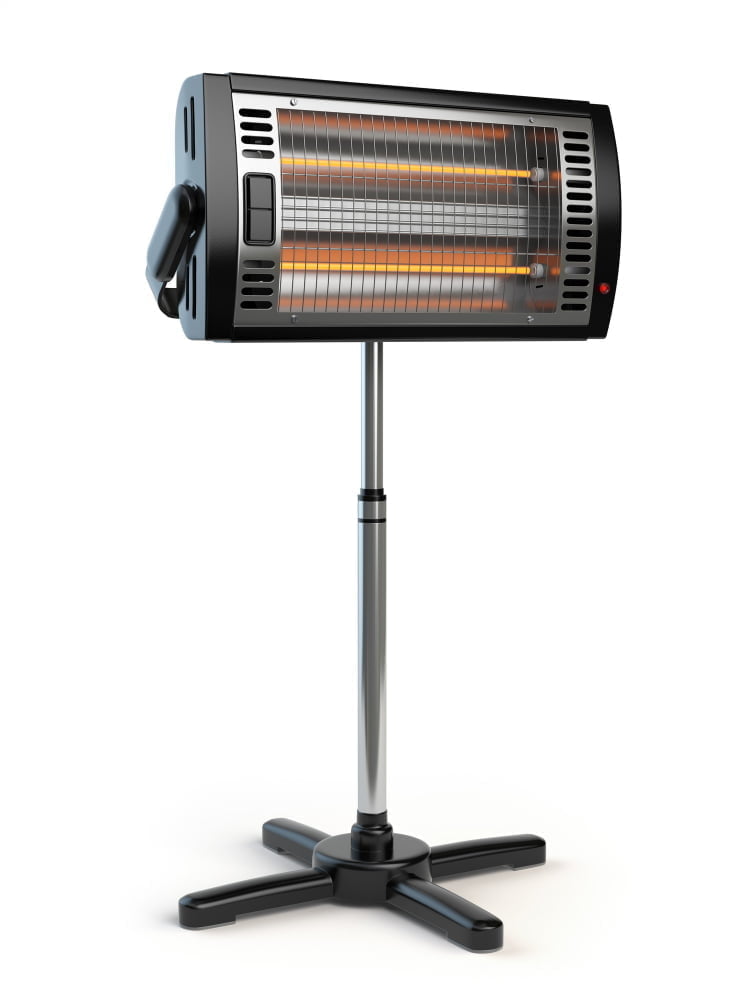
These heaters use infrared technology to produce heat, which is then radiated into the room.
Infrared heaters are often portable and can be moved from room to room as needed.
Advantages of using an infrared heater include their energy efficiency and low cost compared to traditional gas fireplaces. They also do not require any venting or installation, making them a great option for renters or those who don’t want to deal with the hassle of installing a fireplace.
However, one disadvantage of using an infrared heater is that they only provide heat in one direction, meaning you may need multiple units if you have a larger space that needs heating evenly. While they do mimic some aspects of a real flame with their glowing embers and flickering light effects, they cannot replicate the ambiance created by actual flames in quite the same way as other gas fireplace alternatives like electric fireplaces or bioethanol burners can.
Propane Heater

Propane heaters are portable and can be used both indoors and outdoors, making them a versatile option for homeowners.
They come in various sizes, from small tabletop models to larger freestanding units that can heat an entire room.
One advantage of using a propane heater is that it doesn’t require any installation or venting like traditional gas fireplaces do. This means you don’t have to worry about hiring professionals or dealing with complicated installations.
Another advantage is that propane heaters are more energy-efficient than electric space heaters, which can save you money on your heating bills in the long run.
However, one disadvantage of using a propane heater is that it requires regular refilling of its fuel tank. This means additional costs for purchasing and transporting the fuel as well as potential safety hazards if not handled properly.
If you’re looking for an affordable and convenient way to add warmth to your home without breaking the bank on installation costs or high energy bills, then consider investing in a reliable propane heater as your gas fireplace alternative.
Wall-mounted Gas Heaters

Wall-mounted gas heaters offer the same convenience and warmth as a fireplace, but take up less space and can be mounted on any wall in your home.
One advantage of wall-mounted gas heaters is that they are easy to install and require minimal maintenance. They also come in various sizes, styles, and colors to match any decor style.
However, one disadvantage of these heaters is that they do not provide the same ambiance as a traditional fireplace with its flickering flames. Some models may produce noise or emit an odor when first turned on due to their combustion process.
Suppose you’re looking for an efficient heating option without sacrificing floor space or breaking the bank with installation costs associated with traditional fireplaces. In that case, wall-mounted gas heaters might be worth considering!
Portable Space Heaters

Portable space heaters are a popular alternative to gas fireplaces, especially for those who live in smaller spaces or apartments. These heaters come in various sizes and styles, from traditional-looking models that mimic the appearance of a fireplace to sleek modern designs that blend seamlessly into any decor.
One advantage of portable space heaters is their affordability. They are generally much cheaper than installing a gas fireplace and require no installation costs.
They can be easily moved around the room or even taken with you when you move.
However, there are also some disadvantages to consider before purchasing a portable heater as an alternative to your gas fireplace. Firstly, they may not provide the same level of warmth as a real fire would since they rely on electricity rather than burning fuel like natural gas or wood logs.
Secondly, some models can be noisy and disruptive while others may pose safety hazards if left unattended.
Hydronic Baseboard Heating
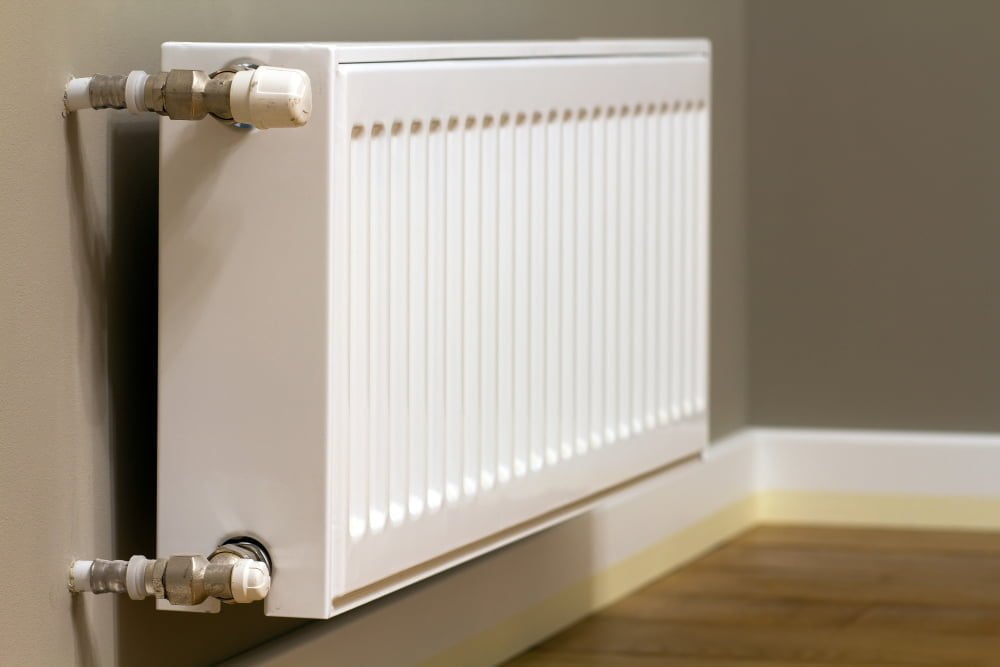
Hydronic baseboard heating is a great alternative to gas fireplaces, especially for those who live in colder climates. This type of heating system uses hot water that runs through pipes installed along your home’s baseboards.
The heat radiates from these pipes and warms up the room.
One advantage of hydronic baseboard heating is that it provides consistent warmth throughout your home without any cold spots or drafts. It’s also very quiet and doesn’t require any electricity to operate, making it an energy-efficient option.
However, one disadvantage is that installation can be costly as it requires professional plumbing work and may involve tearing up floors or walls. If not properly maintained, the system can develop leaks which could cause damage to your home.
Solar Thermal Systems

These systems use the sun’s energy to heat water, which can then be used for space heating or domestic hot water.
The advantages of solar thermal systems are numerous. First and foremost, they are environmentally friendly and sustainable since they rely on renewable energy sources rather than fossil fuels like natural gas.
Once installed, these systems have very low operating costs since the sun provides free fuel.
However, there are also some disadvantages to consider when it comes to using a solar thermal system as an alternative to a gas fireplace. One major drawback is that these systems require significant upfront investment in order to install them properly – including purchasing and installing collectors on your roof or property.
Furthermore, while solar thermal technology has come a long way in recent years with improved efficiency rates even during cloudy days; it still may not provide enough heat output for larger homes or colder climates without additional backup heating sources such as electric heaters or wood stoves.
Masonry Heater

Masonry heaters work by burning the wood at high temperatures, which heats up the bricks or stones in the heater’s core. The heat then radiates into the room slowly over time.
One advantage of a masonry heater is that it can provide long-lasting warmth even after you’ve stopped adding wood to it. This makes them an excellent choice for those who want to reduce their reliance on fossil fuels and save money on heating bills.
However, one disadvantage of masonry heaters is that they require more space than traditional fireplaces because they need enough room for proper ventilation and insulation around them. Building a custom-made masonry heater can be expensive upfront compared to other alternatives like electric fireplaces or portable propane heaters.
If you’re looking for an eco-friendly way to heat your home with natural materials while also creating beautiful ambiance in your living space, then consider investing in a well-designed and properly installed masonry heater as an alternative option instead of using gas fireplaces exclusively!
Radiant Floor Heating

This type of heating system involves installing pipes or electric wires beneath the flooring, which then radiate heat upwards into the room.
One advantage of radiant floor heating is that it provides even and consistent warmth throughout the space, without any cold spots or drafts. Since there are no vents or ducts involved in this type of system, there’s no need for regular maintenance or cleaning.
However, one disadvantage of radiant floor heating is that it can be expensive to install initially compared to other types of home heating systems. It also takes longer for the floors to warm up than traditional forced-air systems and may not provide as much heat output during extremely cold weather conditions.
Despite these drawbacks though many homeowners still prefer radiant floor heating due its energy efficiency and comfort benefits over time making it a great alternative option when considering alternatives to gas fireplaces in your home decor plans on budget!
Ductless Mini-split System

This type of heating and cooling system uses an outdoor compressor unit and one or more indoor air-handling units to regulate temperature in different zones of your home.
Advantages of a ductless mini-split system include its energy efficiency, as it only heats or cools the rooms that are being used, rather than wasting energy on unoccupied spaces. It also provides flexibility in terms of installation, as it doesn’t require any ductwork.
However, there are some disadvantages to consider before choosing this option for your home decor needs. The initial cost can be higher than other alternatives such as electric fireplaces or space heaters.
While they do provide heat throughout the room they’re installed in; they don’t have quite the same cozy ambiance that comes with a traditional fireplace.
Recap
